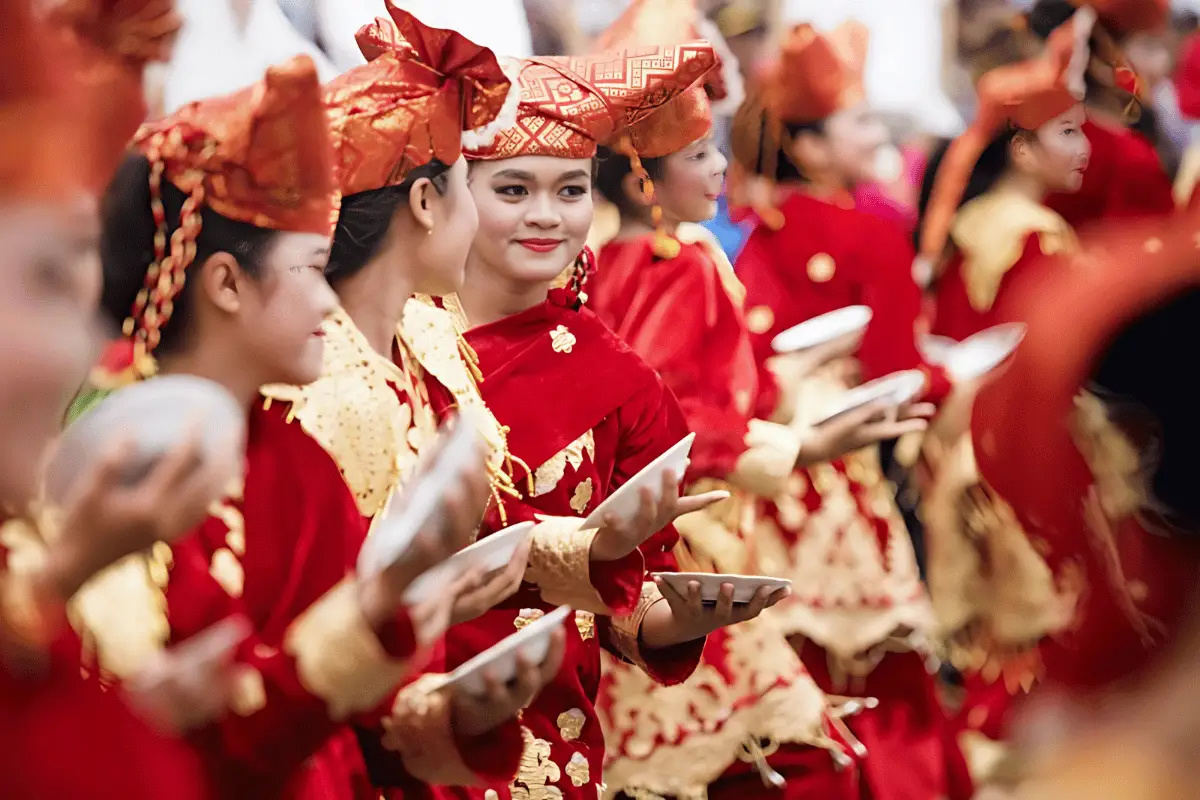pokomde.info – Tari Piring, or the “Plate Dance,” is a captivating traditional dance originating from the Minangkabau ethnic group in West Sumatra, Indonesia. This dance is not only a celebration of culture but also a fascinating display of balance, grace, and community spirit.
Historical Background
The origins of Tari Piring can be traced back to the rich traditions of the Minangkabau people, who are known for their matrilineal society and vibrant cultural practices. Traditionally performed during ceremonies and celebrations, the dance reflects the community’s values, beliefs, and connection to nature.
Performance Style
Tari Piring is characterized by dancers gracefully balancing plates on their hands while executing intricate movements. The plates, often made of metal, symbolize prosperity and are an essential element of the performance. The dance is typically performed by a group of dancers, usually women, dressed in colorful traditional attire adorned with intricate patterns.
The choreography involves a series of dynamic movements, including spins, jumps, and synchronized formations. The dancers often engage with the audience, inviting them to participate in the celebration. The rhythmic music, typically played with traditional instruments like the saluang (flute) and talempong (gong), enhances the overall experience.
Symbolism and Meaning
The act of balancing plates signifies harmony and balance in life. It also represents the Minangkabau belief in cooperation and mutual support within the community. Each dancer’s ability to maintain balance while performing intricate steps reflects the importance of discipline and focus in achieving personal and communal goals.
Cultural Significance
Tari Piring plays a vital role in preserving the cultural heritage of the Minangkabau people. It is often performed during important events such as weddings, harvest festivals, and cultural festivals. Through this dance, the community passes down stories, values, and traditions to younger generations, ensuring that their rich cultural identity endures.
Conclusion
Tari Piring is more than just a dance; it is a vibrant expression of the Minangkabau culture, reflecting their history, values, and artistic talent. As it continues to be performed and celebrated, Tari Piring remains a testament to the enduring spirit of Indonesia’s diverse cultural heritage. Visitors to West Sumatra are often enchanted by this dynamic performance, offering a unique glimpse into the heart of Indonesian tradition.








